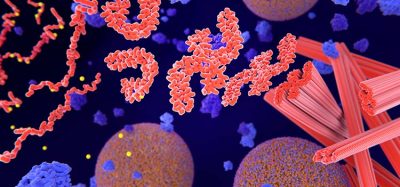New nanotherapy could potential treat Crohn’s disease in children
Posted: 18 February 2021 | Victoria Rees (Drug Target Review) | No comments yet
A novel nanotherapy can decrease intestinal inflammation and shrink lesions in rodent models of Crohn’s disease, a study has shown.

Scientists have demonstrated that a nanotherapy reduces intestinal inflammation and shrinks lesions in a rodent model of severe Crohn’s disease. According to the researchers from the Ann & Robert H Lurie Children’s Hospital of Chicago, US, this approach could become an alternative to biologic antibody therapies that carry many side effects, including increased risk of certain cancers.
Crohn’s disease is an inflammatory bowel disease characterised by chronic inflammation of the digestive tract, most often in the small intestine. One of the key features of Crohn’s disease is lesions along discontinuous segments of the intestine. Current treatments include biologic antibody therapies and in severe cases surgery, which is not curative.
“We injected into the intestinal lesion [of rodents] nanomolecules that carry an anti-inflammatory peptide, which is a tiny portion of a protein,” said senior author of the study Dr Arun Sharma. “The results were phenomenal. We saw reduction in inflammation based upon reductions in pro-inflammatory immune cells and proteins. The lesion size shrunk dramatically, which gives us hope that with this therapy we can salvage inflammatory tissue and avoid needing to surgically remove segments of the intestine in severe cases of Crohn’s disease.”
Based upon their design, these nanomolecules allow for a very concentrated dose to be introduced into a lesion. Sharma and colleagues observed that it creates an anti-inflammatory environment that not only keeps the lesion from growing but also reduces its size.
“Our study provides proof-of-principle findings that this nanotherapy can be effective for Crohn’s disease and may be applicable to other inflammatory bowel diseases, such as ulcerative colitis,” said Sharma. “Before we can translate this work to clinical application, we need to develop a less invasive mode of delivery, such as oral or via endoscopy.”
The findings of the study were published in the journal Advanced Therapeutics.
Related topics
Drug Delivery, Drug Leads, In Vitro, Nanomedicine, Nanotechnology, Peptide Therapeutics
Related conditions
Crohn’s disease
Related organisations
Ann & Robert H. Lurie Children's Hospital of Chicago
Related people
Dr Arun Sharma







